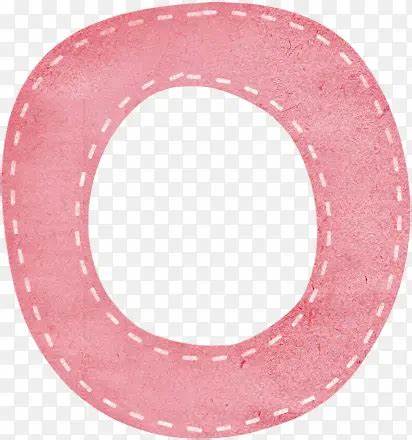python统计小写字母个数silower
python中求小写字母的多少(python判断小写字母个数)
简介:今天首席CTO笔记给大家分享一下Python中查找小写字母个数的相关内容。
如果这解决了您当前面临的问题,请记住关注此网站并立即开始。
!
str_1=input("请输入字符串:")
numC=0
numS=0
numO=0
i=0
len_str=len(str_1)
whilei=len_str:
i+=1
if(str[i]="A")and(str[i]="Z"):
numC=numC+1
if(str[i]="a")and(str[i]="z"):
numS=numS+1
else:
numO=numO+1
print("你得到的字符串的统计结果输入为:",len_str)
print("共有%s个大写字母"%numC)
print("共有%s个小写字母"%numS)
print("还有%s个其他字母"%numO)
或
#python3.6
s=input("请输入一个字符串:")
a=b=c=0
foriins:
if'A'=i='Z':
a+=1
elif'a'=i='z':
b+=1
else:
c+=1
print("您输入的字符串统计结果为:",len(str))
print(f"有{a}个大写字母")
print(f"有{b}个小写字母")
print(f"还有{c}个其他字母")
Python接收一个输入字符串并统计其中小写字符的个数字母
fromstringimportascii_lowercase;
#stringa="你好,杰克";
stringa=input("string:");
print(len([jforjinstringaifjinascii_lowercase]));
#print(len([jforjinstringaifj.islower()]));
使用python从中抓取字符串数一下键盘上有多少个大写、小写字母和数字?#includestdio.h
intmain()
{
charstr[256];
char*p;
intupper=0;
intlower=0;
intspace=0;
intdigit=0;
intother=0;
p=str;//指针P指向数组str[0]的第一个元素
gets(p);
while(*p)//P不为空继续下面
{
if(*p='A'*p='Z')//判断zhi是否为大写
{
upper++;//计数字母的大写
}
elseif(*p='a'*p='z')//设为小写dao
{
lower++;//统计小写字母的个数
elseif(*p=='')//判断是否是""
{
space++;//统计个数
}
elseif(*p='0'*p='9')//判断是否为数字
{
digit++;//数字统计Number
}
other
{
other++;//其余为其他单词统计字符数
}
p++;//向后移动指针
printf("upper=%d\n",higher);//输出
printf("lower=%d\n",lower);//输出
printf("space=%d\n",space);//输出
printf("digit=%d\n",digit);//输出
printf("other=%d\n",other);//输出
return0;
扩展信息:
字符串与存储的字符数组类似。
可以提取字符串的每个元素。
零位是。
它的长度,使得s[0]=10,这给我们带来了很多方便。
例如,在高精度运算时,可以将每一位转换为数字并存储在数组中。
通常使用整个字符串作为操作对象,例如:在字符串中查找子字符串、获取子字符串、在字符串中的某个位置插入子字符串、删除子字符串等。
两个字符串相等的充要条件是:长度相等且每个匹配位置的字符相等。
假设p和q是两个字符串。
寻找q在p中第一次出现的位置的操作称为模式匹配。
两种最基本的字符串存储方式是顺序存储和链接存储。
参考来源:百度百科-字符串
Python统计字符串中的大小写字母str_1=input("请输入字符串:")
numC=0
numS=0
numO=0
i=0
len_str=len(str_1)
while?i=len_str:
i?+=?1
if(str[i]="A")?and?(str[i]="Z"):
numC=numC+1
if(str[i]="a")?和?(str[i]="z"):
numS=numS+1
其他:
?numO=numO+1
print("您输入的字符串统计结果为:",len_str)
print("有%s大写字母字母"%numC)
print("共有%s个小写字母"%numS)?
print("还有%s个其他字母"%numO)
或
#?python3.6
s?=?input("请输入字符串:")
a?=?b?=?c?=?0
for?i?in?s:
if?'A'?=?i?=?'Z':
?有?+=?1
elif?'a'?=?i?=?'z':
b?+=?1
?else:
?c?+=?1
print("您输入的字符串统计结果为:",len(str))
print(f"有{a}个字母大写字母")
print(f"还有{b}个小写字母")?
print(f"还有{c}个其他字母")
结论:以上是首席CTO关于Python求小写字母个数的笔记呈现的全部内容。
如果您想了解更多这方面的信息,希望对大家有所帮助。
,不要忘记将此网站添加为书签并关注它。
输入一个字符串,统计其中的大写字母,小写字母,数字字符,空白。
1.编写计算大写字母数量的代码,
intcnt_upper=0;
Stringregex_u="[A-Z]";
Patternp3=Pattern.fill(正则表达式_u);
java.util.regex.Matcherm3=p3.matcher(str);
while(m3.find()){
cnt_upper++;
}
是stem.out.print("字母个数大写:");
System.out.println(cnt_upper);
2.编写代码并统计小写字母的个数,
intcnt_lower=0;
Stringregex_l="[a-z]";
p3=Pattern.compile(regex_l);
m3=p3.matcher(str);
while(m3.find()){
cnt_lower++;
}
System.out.print("小写字母个数:");
System.out.println(cnt_lower);
3.编写代码,统计数字的个数,
intcnt_num=0;
Stringregex_n="[0-9]";
p3=Pattern.compile(regex_n);
m3=p3.matcher(str);
while(m3.find()){
cnt_num++;
}
System.out.print("数字个数:");
System.out.println(cnt_num);
4.输入测试字符串Stringstr="A123Bde456EfG",运行程序并输出测试结果,
输入一行字符,分别统计其中的英文大写字母,小写字母,数字字符和其他字符
#include输入一行字符,分别统计出其中大小写英文字母、空格、数字和其他字符的个数
#include
intmain()
{
charc;
intletters=0,spaces=0,digits=0,others=0;
printf("请输入任意字符串字符:\n");
while((c=getchar())!='\n')
{
='a'&&c<='z')||(c>='A'&&c<='Z'))字母++;
='0'&&c<='9')数字++;
elseif(c=='')
空格++;
else
others++;
}
printf("有%d个字母和数字%d个空格,%d个空格,%d个有",字母、数字、空格等);
return0;
}
扩展信息:
字符是可以使用各种字符方案和代码页表示的抽象实体。
例如,UnicodeUTF-16编码将字符表示为16位整数序列,而UnicodeUTF-8编码将相同字符表示为8位字节序列。
微软的公共语言运行时使用UnicodeUTF-16(UnicodeTranslationFormat,16位编码格式)来表示字符。
参考来源:百度百科-人物

相关文章

MySQL数据库导入导出教程:虚拟主机与...
2024-12-14 23:27:58
轻松掌握:如何使用CMD命令查看MySQ...
2025-03-15 13:23:05
轻松掌握Navicat:SQL数据库文件...
2024-12-21 02:29:48
MySQL高效查询技巧:如何使用LIMI...
2024-12-15 06:38:49
小皮phpstudy MySQL启动问题...
2025-01-11 21:58:11
SQL删除重复数据:保留唯一记录的技巧与...
2025-03-30 16:53:31
SQL数据库备份与查询优化技巧解析
2025-03-08 19:17:30
数据库主键自增设置指南:SQL语句详解
2025-01-08 15:25:18
C语言中字符空格检测方法解析
2024-12-26 21:37:55